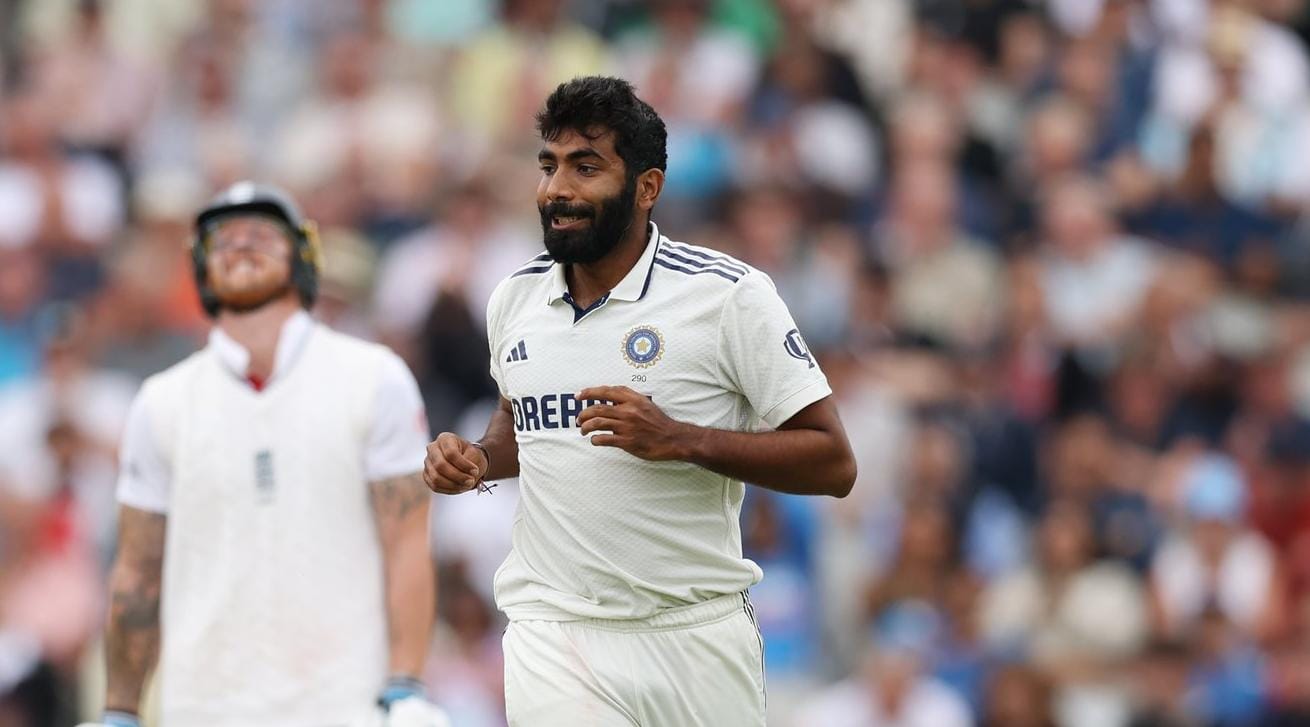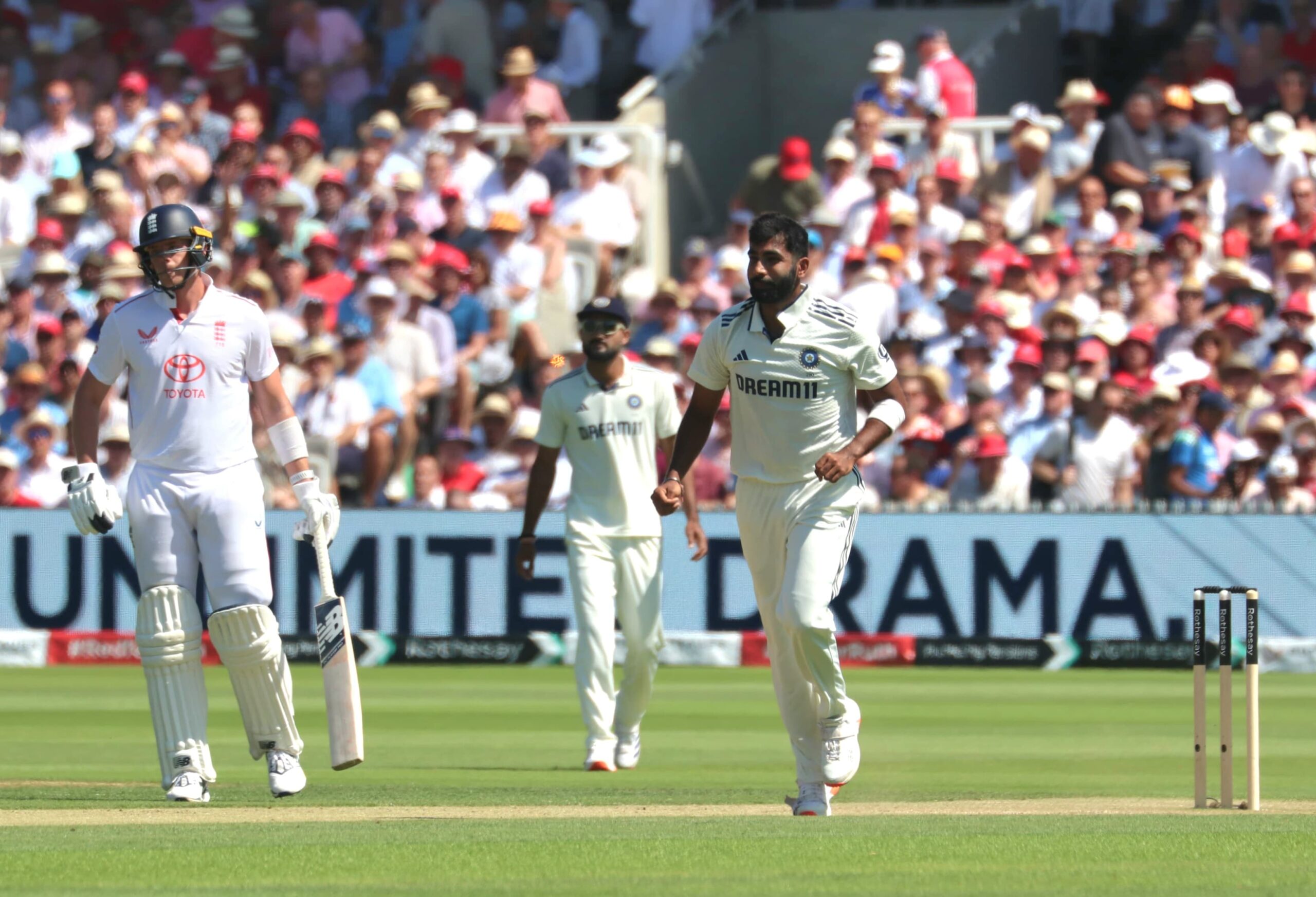
Jasprit Bumrah, India’s ace fast bowler, faced unwarranted criticism for playing only three of the five Tests during India’s recent tour of England for the Anderson-Tendulkar Trophy. Former cricketers like Sandeep Patil and Sanjay Manjrekar dismissed the BCCI’s workload management theory as “nonsense,” urging Bumrah to prioritise national duty. The critical take, however, fails to account for the gruelling demands of modern cricket, the unique physical toll of Bumrah’s bowling action, and the necessity of preserving a once-in-a-generation talent for India’s future.
Fast bowling is brutally taxing, with the high-impact cycle of sprinting, leaping, and bowling at over 140 kmph straining the body immensely. Bumrah’s unconventional action, while lethal, heightens his injury risk, as evidenced by a 2019 stress fracture that kept him out for nearly a year. B Arun, former India bowling coach, had highlighted the severity of Bumrah’s back surgery, emphasising that relentless bowling could jeopardise his career.
“It’s so sad to hear this stuff against Bumrah,” Arun had told The Indian Express. “He has had a serious surgery, and people should understand it is not as if the surgery is done and he is all good forever. No, this is far more serious stuff on his back now.”
Critics like Patil often glorify the endurance of past players like Kapil Dev, who rarely missed Tests. This comparison is outdated. Kapil adapted by slowing his pace, a luxury Bumrah cannot afford as India’s spearhead across formats. Modern cricket’s packed schedule, Tests, ODIs, T20Is, and the IPL, demands peak performance year-round. The BCCI’s strategic rest for Bumrah, announced by Shubman Gill and Gautam Gambhir before the England tour started, ensured he was fresh for key matches. He took 14 wickets, including two five-wicket hauls, in three Tests.
Also Read: Prospect of being vice-captain will play no role in Gill’s possible Asia Cup selection

Workload management is grounded in science, not sentiment. The BCCI’s medical team uses data-driven analytics to tailor workload, protecting players like Bumrah from overexertion. Resting him for two Tests was a calculated move to prevent injuries that could derail his career, a decision validated by his stellar performance when he played. Critics like Manjrekar, who insisted Bumrah should play despite fitness concerns, overlook the risks of diminished performance or worse, as seen in his struggles during the fourth Test at Old Trafford. Forcing him to play could rob India of a bowler with 200 Test wickets at an unmatched average of below 20.
“Workload management is not applicable only to Bumrah. Every bowler’s fitness and every bowler’s issues are different,” India’s batting coach Sitanshu Kotak had said at a press conference in England. “We cannot think that we are thinking the same for one person, and he is thinking the same for everyone. But I think there was enough rest in between (between the first and second Test). After this match, the turnaround time is less. But if they feel somebody requires rest, obviously, the bowler will also know. The bowler will also know that I require rest.”
The criticism also ignores India’s success in the Tests Bumrah missed, with Mohammed Siraj stepping up. This depth highlights the wisdom of workload management, allowing India to balance immediate needs with long-term goals like the Asia Cup and T20 World Cup. Accusing Bumrah of lacking commitment, as some have, dismisses his monumental contributions, like his 32 wickets in Australia. Ultimately, the BCCI’s approach ensures Bumrah’s longevity, benefiting Indian cricket far more than short-term heroics. Criticising this strategy is not just unfair, it’s short-sighted.
For more updates on Indian Cricket, follow RevSportz





